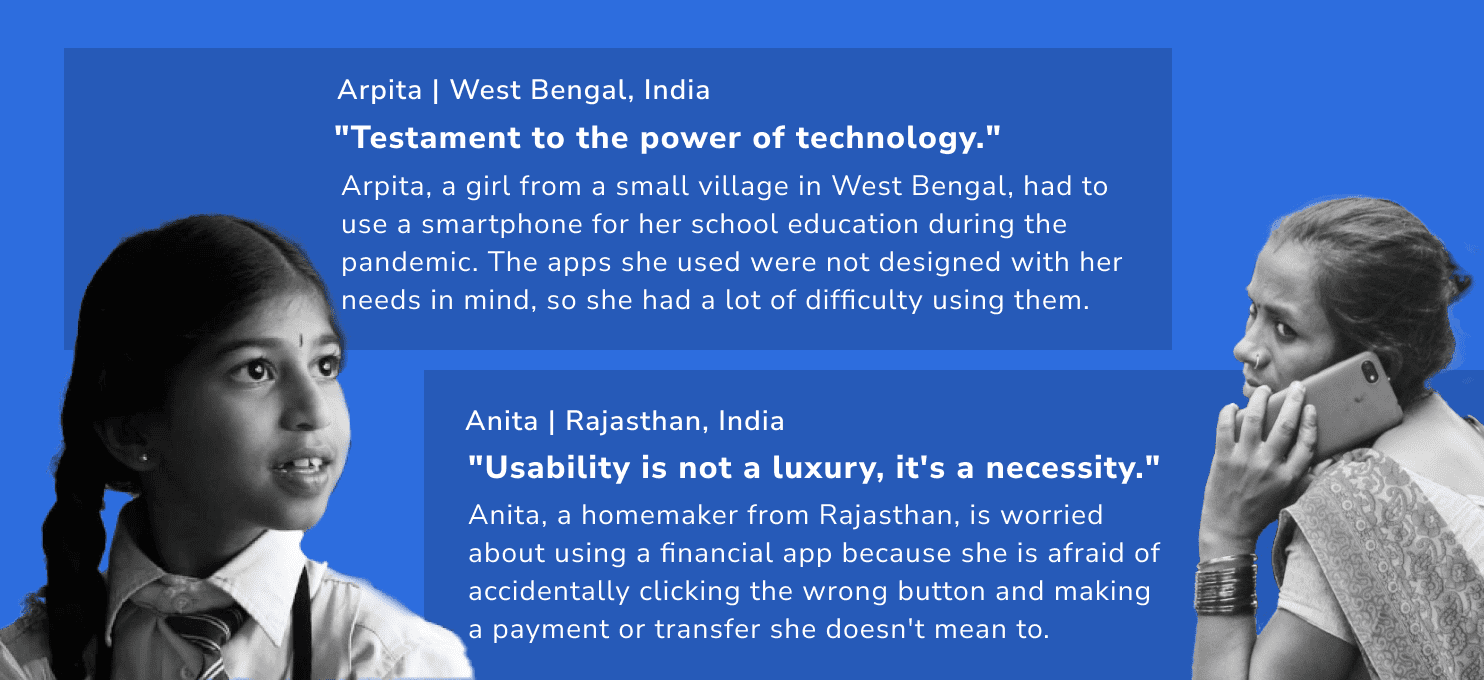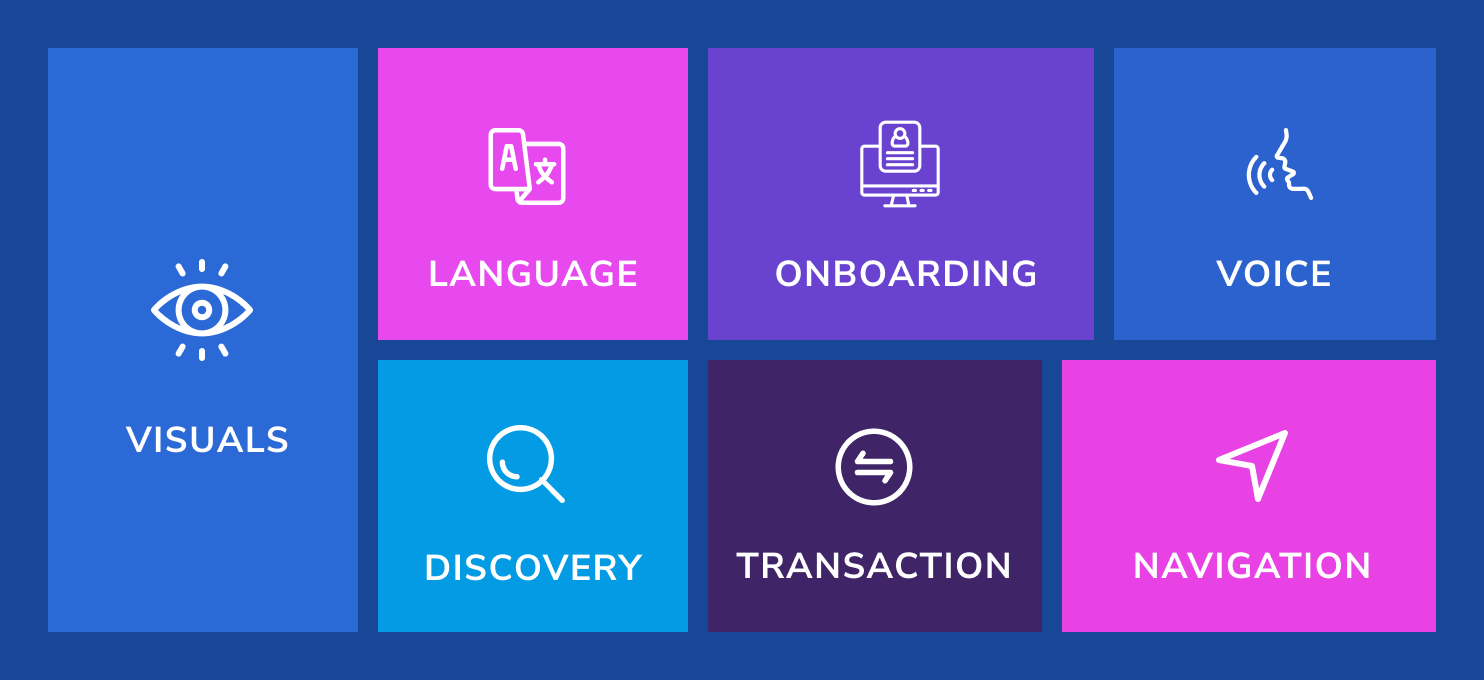
Imagine yourself as a 7-year-old kid going to a
candy store. You see the bright
colors and the iconic logo of the "Candy Man". Your eyes bulge out, and
your
tongue starts to imagine the taste of your favorite candy. You enter the
store,
and all of your favorite candies are separated individually, with one
color for
each section and one distinct style for each brand.
Then you meet the storekeeper. Your guardian purchases one candy for
you, but
you wanted two. You make a "lonely face" on your way to the storekeeper.
And
then the keeper presents you with another candy, exactly the one you
wanted,
beside the other. What an experience that would have been if it were
real!
Let us understand the difference between UI (user interface) and UX (user
experience) with this fairy tale.
User Interface (UI) is the visual design of a digital product or website. It
includes the colors, fonts, icons, layout, and other elements that users see
and
interact with. User experience (UX) on the other hand is the overall
experience
of using a digital product or website. It includes factors such as
usability,
navigability, and satisfaction.
In short, everything special about the candy store was the user interface in
the
digital world, and the experience that the kid (which you can be as well)
had
can be referred to as user experience. This is an oversimplified
explanation,
but you will eventually catch up as we proceed.

Table of Content
Overview of the UX design landscape in India
According to
Simplilearn,
“The UX/UI design market stands at a chance of getting valued at 1346
million USD by 2028.”
User experience (UX) is connected with user interface (UI) with a single
thread.
UX is about transforming a well-planned blueprint into the digital
hemisphere where a user's can find what they are looking for BUT without any
roadblocks.
Nobody wants to get lost, and everyone wants to find what they are looking
for quickly and easily. It might not be possible in reality but in the
digital space, it is. UX makes it a possibility for the user.
India is a country of opportunities. As per reports,
“A total of 1.10 billion cellular mobile connections were active in India
in
early 2023, with this figure equivalent to
You can understand the scope for digital products or websites selling
tangible products and here comes the scope for UI/UX.
So why do we know so little about the importance of UX/UI?
The answer is 'LACK OF AWARENESS'.
We will discuss the challenges facing UX/UI design after we have a
better
understanding of its importance.
Importance of UX design in the digital age
Functionality (user interface) and the ability to enjoy (user experience) a
website are the synonyms for UX/UI. If the user does not get used to the
UI/UX, then their chances of becoming a buyer or someone who will be buying
a product from you can be critical.
How can a bad UX/UI can be so important from the point of view of selling a
product or services?
Let us take a few real-life examples from the rural India:

1. Testament to the power of technology: With the 'JIO internet
boom',
consuming 1GB data in an hour is neither a fantasy nor a sport for the
elite. It is a reality and every part of India is having a piece of it. The
story is however a little different in rural India because Internet might be
cheap but a 3G smart-phone is distant dream.
A country where the average daily wage lies is below 300 INR, procuring a
smart-phone can be a hard sport.
This brings us to a real-life story of Arpita from a small village located
in Alipurduar, West Bengal. During the pandemic, Arpita realized the value
of internet connectivity and her father bought her a smart phone. Her school
education was entirely dependent on the smart-phone and its applications.
Initially she had a lot of difficulties using a few applications due to
which she had to resort to other applications.
The main problems she faced were:
- The applications were not designed for slow internet connectivity.
- The features were too complex for her to understand.
- The language used in the applications was not familiar to her.
This story helps us understand that there is an untouched market in rural
India which is still waiting for a more user-friendly application. The story
of Arpita is a clear-cut indication about the importance of User design.
2. Usability is not a luxury, it's a necessity: Anita is a
35-year-old woman
from Mandawa, Rajasthan. She is a homemaker and has two young children. She
recently started using a financial application to manage her finances.
However, she is concerned about clicking the wrong button on the
application. She is worried that she might accidentally make a payment or
transfer money that she does not intend to.
Anita is not alone in her concerns. Many people are hesitant to use
financial applications because they are afraid of making mistakes. This is
especially true for people who are not familiar with technology.
UX/UI designers can help to address these concerns by making financial
applications more user-friendly. This includes using clear and concise
language, providing clear instructions, and making sure that the website is
easy to navigate.
By taking these steps, UX/UI designers can help to make financial
applications more accessible and user-friendly. This will help to put
people's minds at ease and make them more likely to use these applications.
Now that you can have a faint idea about the after-effects of a bad UX
design, let us discuss its importance.
1. It improves ‘brand-image’
A brand gets identified only when it offers something unique. This can be a
"great Diwali sale" or an "end-of-season sale," but this comes in the
secondary stage.
In the primary stage, when a consumer starts to use an application for the
first time, it's the user experience that will decide if he or she is going
to come back and shop happily ever after!
2. It catalyses product/service penetration
In the secondary stage, after you have convinced your consumer to stay,
comes the part where a viewer turns into a buyer. An interactive design,
added with accessible icons, catalyses products and services into the minds
of the consumer.
3. It converts ‘searchers’ into ‘buyers’
In the tertiary, but final stage, your consumer eventually turns into a
buyer. It's no secret that a fancy restaurant brings curiosity in the mind
of a new customer (primary and secondary stage). But it's their food and
services (tertiary stage) that brings them back again and again.
Top 7 UX Design Challenges in Digital Bharat

1. Visuals that audience can NOT identify:
‘Digital Bharat is a metaphor for a progressing Bharat. UX/UI designers or
company owners need to understand that the audience is still evolving.
Product penetration can only be possible if clarity is maintained through
visuals.
"What are you selling?" should be on the mind when designing a user
interface for a better user experience. It is very important to have clear
visuals, such as icons, directions, and buttons, so that the audience does
not hesitate to proceed further.
2. Diversification in languages:
According to Ministry
of Education,
“India is a home for 398 languages, including 387 living and 11 extinct
languages.”
It is 2023, but in many parts of India, people are either limited to basic
knowledge of the English language or do not know it at all. This is the
reason why you will see billboards in tier 2 and tier 3 cities that
advertise "Learn English in 30 days."
Most websites or digital applications focus on English language, which
sidelines the ‘non-english speaking’ consumers. The language ‘Hindi’ is not
among the top 30 languages preferred for web or application content. This is
a gap that needs to be bridged in order to reach a larger audience.
Despite the challenges, bridging the language gap in India is an important
goal. By taking steps to bridge the language gap, businesses can reach a
wider audience, improve communication, and promote cultural understanding.
3. Economical hesitation due to lack of credible resources:
It is no mystery that India is economically evolving, yet a large chunk of
the population still lives either on loans, easy instalments, or on a
per-day basis. However, a large chunk of this group of people owns a
smartphone, regardless of their economic status.
Indian families of modest means are protective about three things: their
family, the national cricket team, and their money.
User interface (UI) designs should be transparent and credible enough to not
mislead an Indian consumer (or any consumer, for that matter) into believing
that they might lose their money. This would be catastrophic for any website
or application if there is even a slight misrepresentation by any icon or
verbiage that creates a belief in the mind of a consumer that they might
lose their money.
Lesson: Websites and applications should not use any deceptive tricks to
usher in money from consumers on the pretext of providing any services.
Indian audiences are emotional, and this can help any website develop a
loyal fan base in the long term.
4. First impression is NOT the last impression:
The sign-up process for any application or website should have the following
two characteristics:
- No complex terminology or jargon
- No tedious sign-up process
A smooth sign-up process is essential for any application or website. If the
sign-up process is not smooth, it can irritate users and make them less
likely to sign up. In the digital industry, it is no secret that every
customer who signs up for an application remains with that platform. A
customer-centric, easy, and transparent sign-up process increases your
chances of customer acquisition.
5. Boundaries in payment modes:
According to a survey
by Rakuten Insight on online shopping behavior in
India conducted in June 2022, 62% of consumers preferred cash on delivery
(COD) as a payment method for their online purchases.
Indian consumers are protective of their hard-earned money, and this is
understandable. They have long been accustomed to receiving products in
exchange for cash on delivery, and the concept of prepayment is still new to
many people. This is especially true for digital products, where there is no
physical product to inspect before making a purchase.
To win the trust of Indian consumers, digital product providers need to
focus on UX/UI design that builds confidence. This includes providing clear
and visible information about customer care services, as well as positive
user experiences. By making these forums visible to consumers, digital
product providers can help to overcome the hesitation that many people feel
about making prepayments.
For example, it is because Indian consumers have been following the age-old
barter system of receiving a product with the exchange of money right on the
spot. This has led to a general distrust of prepayments, as people are not
used to the idea of paying for something before, they have received it.
By focusing on UX/UI design, digital product providers can help to overcome
the hesitation that many Indian consumers feel about making prepayments.
This can lead to increased sales and a more successful business.
6. Voice MIS-interpretation:
Indians have their own unique accents when speaking English, just like any
other non-English-speaking demographic. This is why it is important for
websites and search engines to fully understand and interpret speech-to-text
capabilities in an optimized manner. It is also equally important to make
consumers aware of this feature.
For example, the search bar on YouTube is still not 100% capable of
interpreting user commands into words when providing search results. This
can be frustrating for Indian users who have different accents and
pronunciations.
7. Design that is unfamiliar to Indian consumers:
People use what they can relate to. This is the most basic
formula for
making a product a household name. The user experience is very important
because it creates a sense of trust and comfort in the mind of your
consumer. Most Indian consumers switch from one app to another because
they
can relate to the app or website. Discounts are important, but they are
not
as important as making sure that your consumer can easily find their way
around your product.
Conclusion

With challenges come opportunities.
UX/UI designers are the backbone of user-centered design, which helps
audiences relate to a product or service. They make sure that visitors
become customers. Accessibility and usability are key to making a user
relate to a particular digital platform. A UX/UI designer plays an important
role in customer acquisition.
The sole intention of this article is not to present challenges as problems,
but to showcase them as opportunities for UX/UI designers. The era of
Digital Bharat has begun, and UX/UI designers in India have plenty of
opportunities.
Events such as the internet boom, economic reform, and the inclination of
foreign companies towards India have paved the way for Indian UX/UI
designers to explore other domains of employment.
It is also important to understand that UX/UI designers are only responsible
for getting the attention of customers. It is your products and services
that will eventually decide the shelf-life of your website or application.
This is where we come in. We can help you build an obstacle-free platform
because we are aware of the challenges, gaps, and the opportunities in
India. We have tapped into untapped areas, turned over stones that were not
turned before, and found solutions for those digital obstacles that were
either ignored or masked from the eyes of businesses. Contact us and we can
give you an idea about the existing possibilities of helping your business
grow.
We are here to help you succeed.
Get a free consultation today, get in touch with us here.
FAQ
Q. What is the difference between UI and UX?
UI (user interface) refers to the visual elements of a product or service that users interact with, such as the buttons, icons, and text. UX (user experience) refers to the overall experience that users have when using a product or service, such as whether it's easy to use, enjoyable, and meets their needs.
Q. What is the importance of UX design in the digital age?
UX design is the process of designing user interfaces that are easy to use, efficient, and enjoyable. In the digital age, where people are constantly interacting with digital products and services, UX design is more important than ever. By investing in UX design, businesses can improve user satisfaction, conversion rates, reduce costs, and improve brand reputation.
Q. What are some of the challenges of UX design in Digital Bharat?
UX design in Digital Bharat is challenging due to the diversity of the Indian population. Businesses need to design for a multilingual audience, create clear onboarding experiences, and make designs compatible with voice commands. They also need to use clear and compelling visuals, make it easy for users to discover new things, and create secure and easy-to-use designs for transactions. By understanding these challenges, businesses can create great user experiences for Indian users.
Q. What are the best practices for UX design in Digital Bharat?
Some of the best practices for UX design in Digital Bharat include:
- Understand your users: This includes understanding their needs, wants, and expectations.
- Use user research: This is a valuable tool for understanding your users. You can conduct surveys, interviews, and usability testing.
- Design for accessibility: Make sure your digital products and services are accessible to people with disabilities.
- Use local languages: If you are targeting Indian users, use local languages in your digital products and services.
- Be culturally sensitive: Be aware of the different cultures and customs in India and design your products and services accordingly.
















